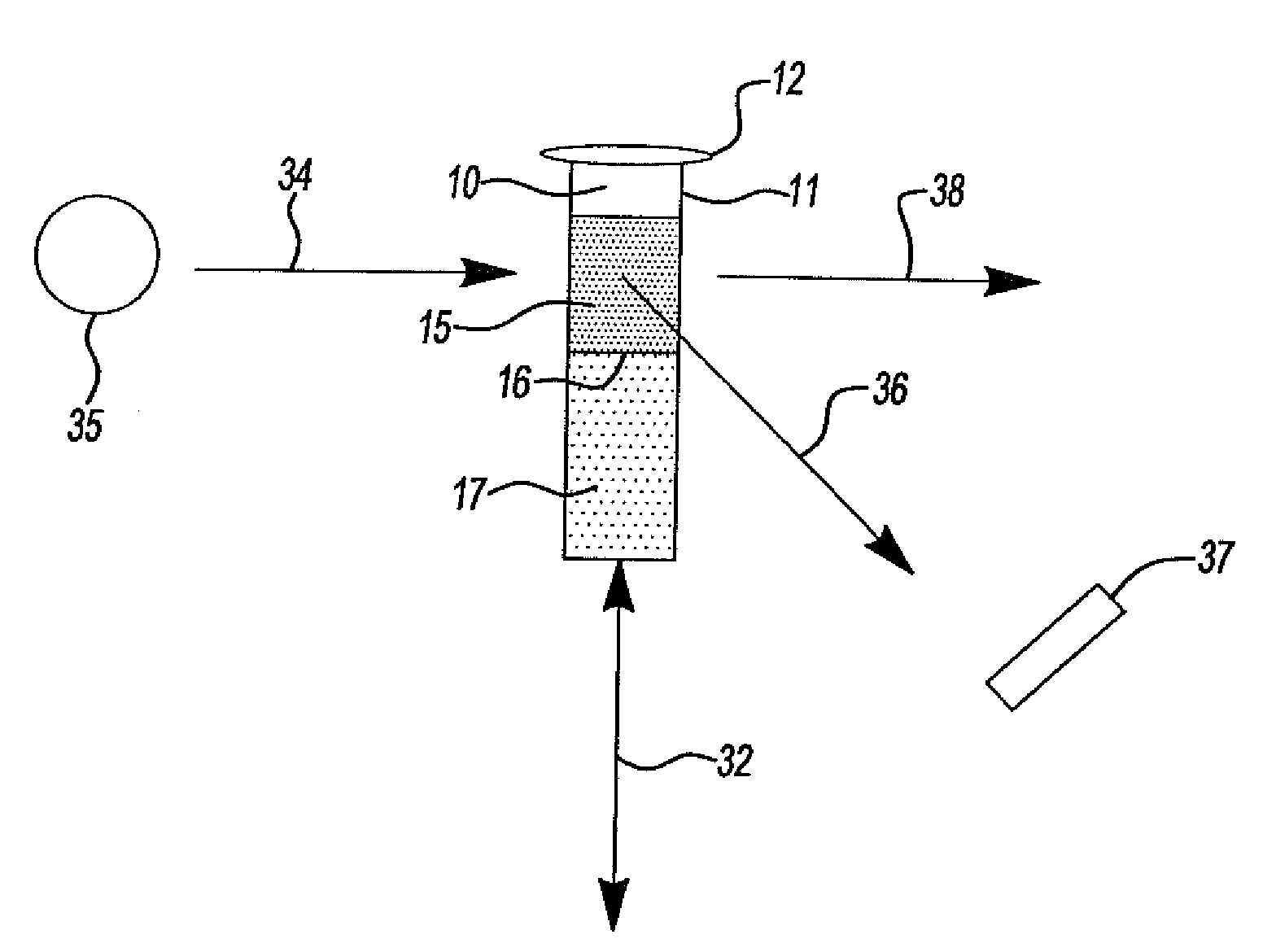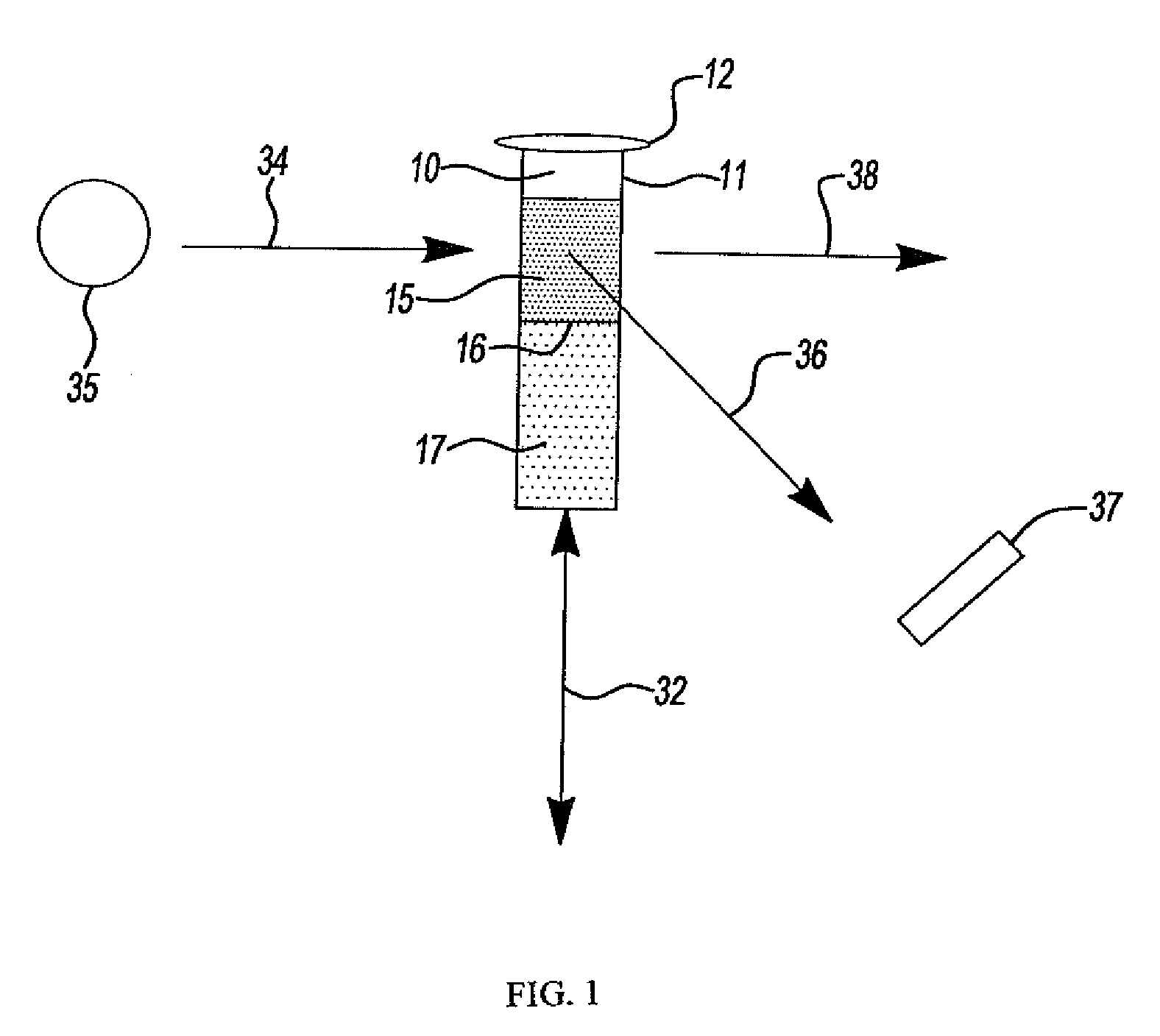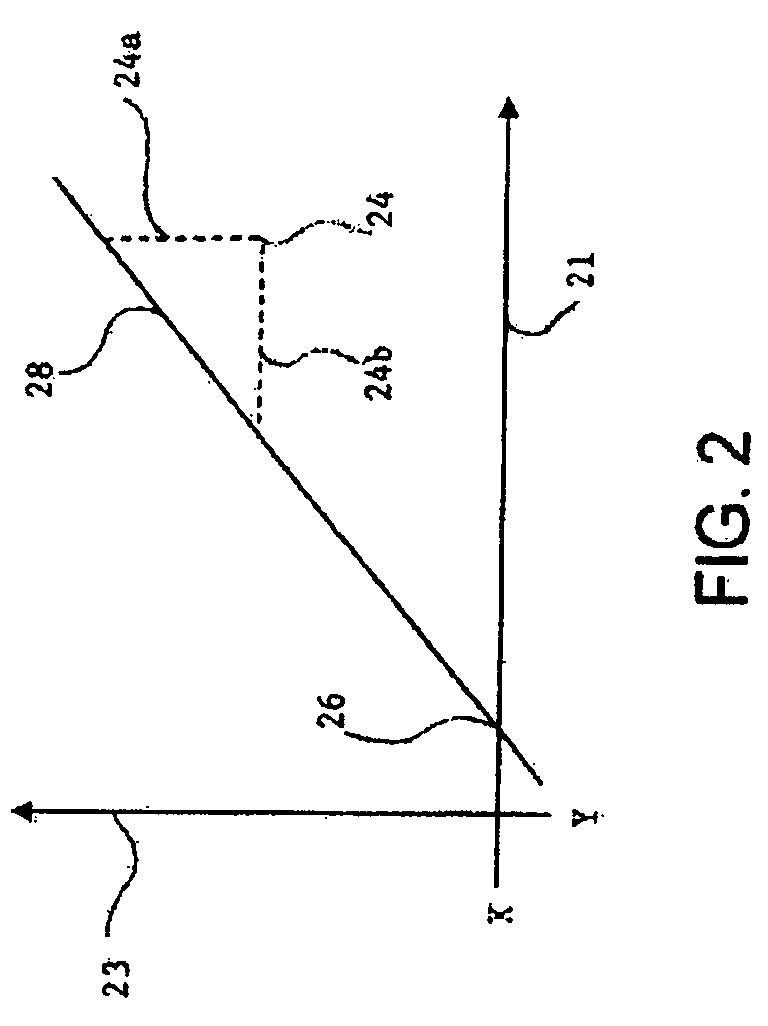Stable turbidity calibration standards
a turbidity calibration and stable technology, applied in the direction of optical radiation measurement, photometry using reference value, instruments, etc., can solve the problems of brownian motion physical limitations, settling of suspensions and evaporation and yellowing, and weaknesses known
- Summary
- Abstract
- Description
- Claims
- Application Information
AI Technical Summary
Benefits of technology
Problems solved by technology
Method used
Image
Examples
preparation 1
[0157]A Silicone-Based Polymer
[0158]In a 100-mL glass beaker is mixed 45 g of 184 resin base and 5 g of 184 curing agent. A resulting mixture is sonicated (i.e., subjected to ultrasound) in an ultrasonic cleaning bath (Model 450, E / MC Corporation) to break up any bubbles at a surface of the mixture. The mixture is then placed in a vacuum desicator fitted with a hose that is connected to a plastic quick connect. The quick connect is to allow a quick release of air back into the desicator, e.g., over 5 to 10 seconds. The desicator is evacuated under house vacuum (15 mm to 20 mm Hg) over several minutes to allow bubbles to grow, rise, and release and then repressurized with air about five times until no additional bubbles are observed. A portion of the degassed mixture is then poured into a 100-mL plastic syringe barrel fitted with a narrow bore needle, but attempts to plunge the mixture through the needle fail. Accordingly, the mixture is poured from the syringe barrel into a vial (ab...
preparation 2
[0159]In a manner analogous to the procedure of Preparation 1, 100.12 g of 184 resin base and 10.00 g of 184 curing agent is mixed in 150-mL glass beaker. The resulting mixture is degassed for 15 minutes under house vacuum, and an aliquot is then poured into a 100-mL syringe with a capped tip to prevent escape of the mixture. The syringe is then inverted and a syringe plunger inserted. The mixture is allowed to collect on a rubber sealed end of the plunger. The plunger is advanced slowly to expel excess air without trapping bubbles. The syringe is placed under house vacuum to remove any bubbles that may form to give a degassed mixture. A 16-gauge tapered plastic tip (I&J Fisnar part number 56001OK) is attached to the barrel, and the degassed mixture is then pushed into the bottom of an about 4.3 cm height vial until the vial is filled to between about 2.8 cm and about 3.0 cm. If necessary, the vial is placed into a 10-mL beaker and sonicated to break any new ...
preparation 3
[0160]Talc (catalog number T4-500, Fisher Scientific) is ground by hand for 2 minutes to stabilize the talc's particle size distribution, yielding ground talc.
PUM
 Login to View More
Login to View More Abstract
Description
Claims
Application Information
 Login to View More
Login to View More - R&D
- Intellectual Property
- Life Sciences
- Materials
- Tech Scout
- Unparalleled Data Quality
- Higher Quality Content
- 60% Fewer Hallucinations
Browse by: Latest US Patents, China's latest patents, Technical Efficacy Thesaurus, Application Domain, Technology Topic, Popular Technical Reports.
© 2025 PatSnap. All rights reserved.Legal|Privacy policy|Modern Slavery Act Transparency Statement|Sitemap|About US| Contact US: help@patsnap.com



